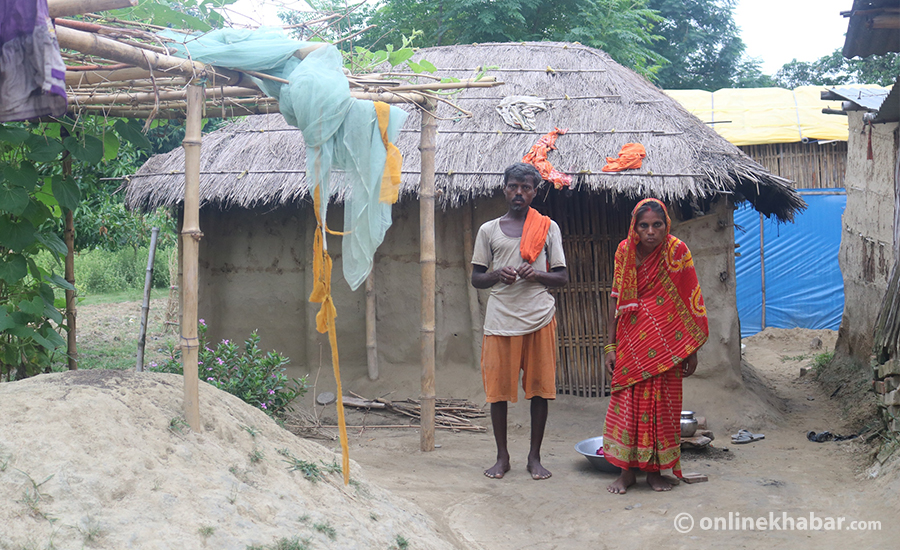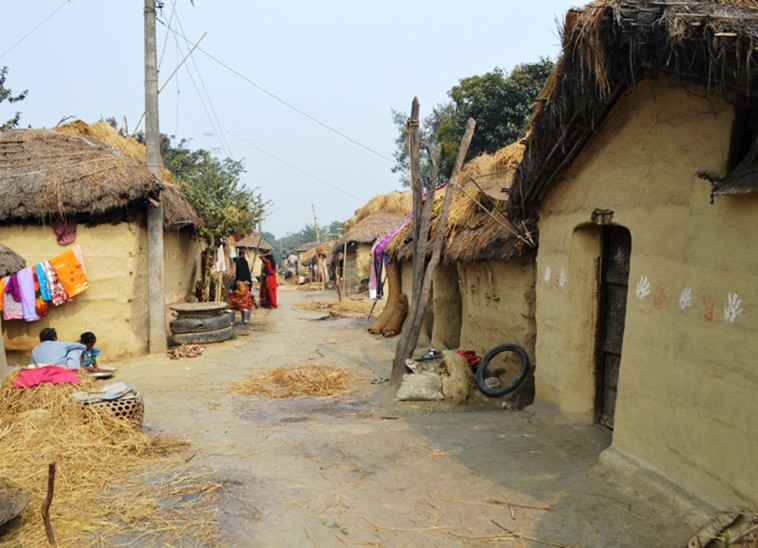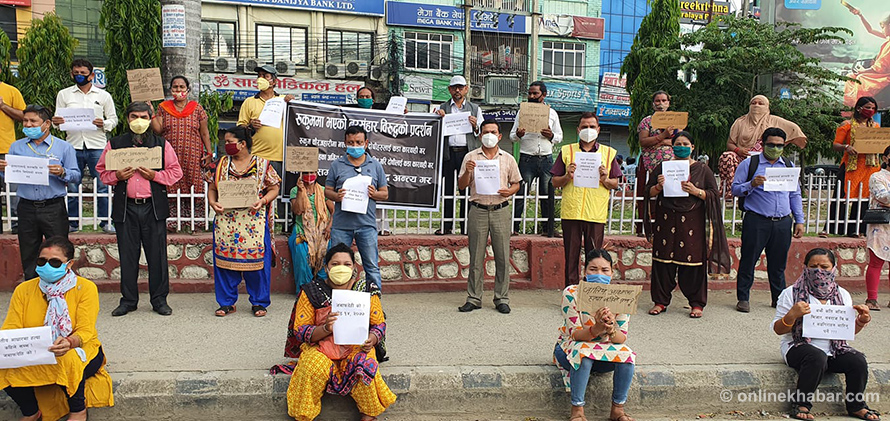
Dalits in South Asia
In an orientalist historical explanations, untouchability originated when Indo-Aryan community migrated to the Indian subcontinent in around 1,500 BCE and deemed the indigenous community inferior in terms of cultural and racial aspects. Manusmriti, an ancient Hindu legal text written around 1,250-1,000 BCE, incorporated the caste system as the basis of order and regularity ‘to preserve the purity of race and blood, ostracising the indigenous community into Achhoots.
India’s BR Ambedkar, however, declines to accept this multiracial notion of Aryans and non-Aryans and the purity. He defines caste as an artificial stratification of people into fixed and definite units. He presents the caste system not as a racial division but as a social division of people of the same race.
Dalits in Nepal

In Nepal, the earliest caste system is said to have come to practice in Khas Rajya (modern-day western Nepal) in the 12th century when Brahmins from the then independent states in India came to the Sinja valley. Dor Bahadur Bista’s Fatalism and Development details how the caste system was introduced in Khas Rajya during the early medieval period. Likewise, the caste system was introduced in Kathmandu Valley by King Jayasthiti Malla with the assistance of his five pandits in the 14th century by introducing four Varnas and 64 Jaats.
In modern times, Prithvi Narayan Shah declared his unified territory as the country of four Varnas and 36 Jaats. Jung Bahadur Rana legitimised the caste system through the country’s first documented law, Muluki Ain (Civil Code) 1854, and also included non-Hindu groups in the caste system. The legal code documented the castes into four types:
- Taagadhari – the elite thread-wearing group (Bhramins and Chettris);
- Matwali – the alcohol-drinking group (further divided into Namaasiney or non-enslavable, and Maasiney or enslavable);
- Paani nachalney tara chhoichhito haalnu naparne (impure but touchable)
- Paani nachalney tara chhoichitto haalnu parne (impure and untouchable).
The word ‘Dalit’
The root of the word ‘Dalit’ is ‘Dalan’, which translates to oppression in Sanskrit, Nepali and Hindi languages. Hence, ‘Dalit’ means ‘oppressed’. Perhaps, the word was first used by the Indian reformer Jyotirao Phule. Although Mahatma Gandhi proposed and used the term ‘Harijan’ or ‘children of god’ in 1932, Ambedkar used and popularized the word ‘Dalit’ as a quasi-class term, referring to a class of people at the rock-bottom of the Hindu caste hierarchy.
Social history of Dalits in Nepal

Practising the caste system inflicted discrimination so much so that it would deny even the basic rights to the people from the lowest castes. Jung Bahadur Rana encouraged discrimination based on castes through the Muluki Ain, which was already in practice in the Nepali society. The punishments were set based on caste as the Brahmins were not given capital punishments while the people from the lowest castes would get severe ones. Similarly, marriage was made endogamic, i.e., within the same caste for the sake of purity.
The people labelled as impure were denied even the basic social, economic, cultural, intellectual, and political rights. They were not allowed to touch tap water used by people of a higher caste, could not enter temples, would be punished if they married from a higher caste. They had no participation in politics and education and were even prohibited to touch people and their belongings.
Dalit movements in Nepal
The history of Dalit movements in Nepal can be traced parallel to the country’s political history.
1.
Pre-Panchayat and Panchayat
The first wave of Dalit assertion in Nepal began in 1947 in a village called Thadaswara in Baglung district when Sarvajit Bishwakarma established an organisation called Vishwa Sarvajan Sangh to challenge the existing caste system and wore a ‘janai’ (the sacred thread) against the oppression. In the Kathmandu valley, the successful movement of the Pashupati Temple Entrance Campaign in 1954 is considered one of the first movements.
Many other organisations such as Tailor’s Union (1947), Nepal Samaj Sudhar Sangh (2947), Nepal Harijan Sangh (1947) were established before the democratic struggle against the Rana regime in 1951, while many other organisations were established for Dalit movements and upliftment during Nepal’s first tenure of democracy in 1950-60.
The Interim Government of Nepal Act (1951) was the first legal document to recognise people, including Dalits, as ‘citizens’ with civil and political rights. The autocratic Panchayat regime formulated the New Muluki Ain in 1963 and tried to abolish untouchability in the legal and social systems. During the Panchayat era, nine more organisations were established for the upliftment of Dalits.
2.
Post-Janaandolan I
As the country adopted the free market policy after the restoration of democracy in 1990, it also sought to provide welfare through private development partners such as national and international non-government organisations (I/NGOs). Many organisations emerged with slogans of Dalit emancipation. As the Dalit movement rose, the government formed the Dalit Commission in 2002 and brought many programmes such as scholarships and reservations. And, although such steps were not adequate to abolish caste-based discrimination, it certainly boosted the morale of Dalit rights activism. Dalits had an important role during the decade-long Maoist Insurgency (1996-2006) as thousands of Dalit men and women participated in the armed conflict while around 200 were killed.
3.
Post-Janaandolan II
The country headed to a more participatory federal system post the second People’s Movement in 2006. The issues of Dalits have been covered on the national agenda and the Dalit movement has gradually progressed although it is yet to be institutionalised.
The major achievement during the last decade has been the criminalisation of caste-based discrimination through the Caste-based Discrimination and Untouchability Crime Elimination and Punishment Act in 2011, and the Constitution of Nepal (2015) endorsing the rights and opportunities for the Dalits for their upliftment. Moreover, the constitution recognised the National Dalit Commission as a constitutional body, and the National Dalit Commission Act 2017 was enacted to ensure opportunities for Dalits.
Similarly, the Nepali Parliament has reserved certain seats for Dalits and other excluded communities in the proportional representation system to ensure participation in the political spheres. As per the election laws, 13.8% of the PR seats in the House of Representatives, as well as the provincial assemblies, are allocated for Dalits while the seven provinces must select at least one Dalit representative each among eight seats allocated to them for the National Assembly. Moreover, at least one woman between two women members in each ward of a local government must be from the Dalit community to ensure participation.
The discrimination against Dalits is still a prevailing issue in Nepal as reports of discrimination, prejudice and even hate crimes emerge from time to time. In recent times, the news broke out about the killing of six people from the Dalit community in Rukum (West) as one of the victim tried to elope with a girl from a higher caste. The devastating news did not only shook the nation but brought out again the discourse on discrimination and oppression on the Dalits.

No comments:
Post a Comment